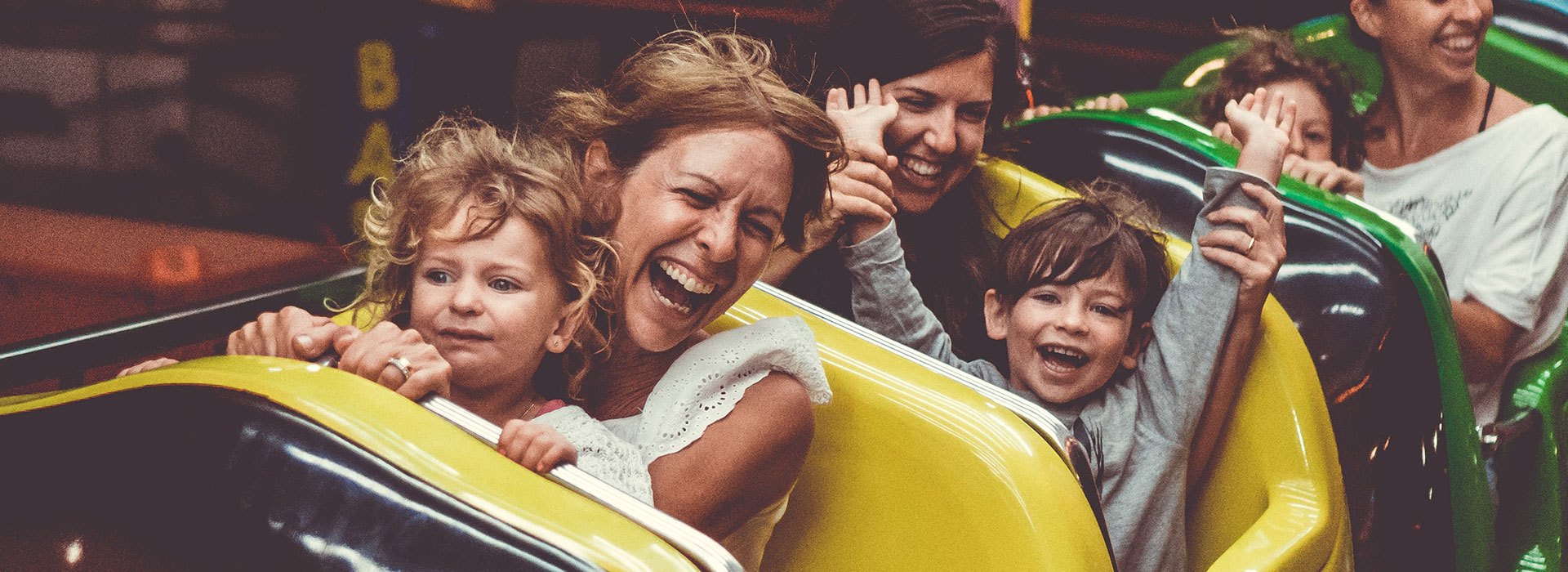It’s getting close to Summer. That means your little ones will be free from school, the sun will be shining, temperatures warmer, and thoughts will turn to your favorite
theme park. What could be more fun? Some exciting rides, some friendly characters and mascots, and snacks galore…
But just as traveling with an infant is an adventure in preventative packing – taking children to a theme park requires some strategic planning.
Having a good day in a theme park starts before you leave the house. In a perfect world, your day is going to be sunny. You’re going to need sunscreen. And you’ll need more after spending some time in the park. You’ll also need walking shoes, and if you don’t relish the idea of carrying a sweaty toddler, that means for everyone. But emergencies happen.
Don’t get us wrong – your chance of becoming sick or injured in a theme park is slim. But it does happen (like the woman struck with an errant cell phone while enjoying King’s Dominion). To minimize that risk, follow the rules. This means the rules you’ve set for being in a public place (stay together, walk – don’t run, and don’t eat that unless you know where it came from), and the rules established by the park. If it says “You Must Be THIS Tall” to ride that ride, make certain your rider IS THAT Tall. If a sign says to stay behind a certain line, stay behind the line. If something does happen, most every theme park has two areas you should identify on arrival: A First Aid Station and a station to meet the missing member of your party. If someone from Disney sees your toddler wandering alone along Main Street, USA, they’re trained to take them somewhere special. Your kids should also know what to do should they become lost. A great first step is to find someone in a uniform.
What if your child has different needs?
Theme parks used to be off-limits for those with mobility or emotional needs. Times have changed, and most parks have wonderful plans in place to make your day enjoyable for everyone. Kings Dominion, for example, has tools for those with hearing impairment, special access and services for those in wheelchairs, and programs for visitors with service animals. Walt Disney World has a host of services catering to those with emotional needs. If your child can’t stand to wait in a line, they offer advanced tickets, Rider Switch (one person waits while the other waits with the visitor not riding – then they switch), and “break areas” for folks who may become overwhelmed. Rest assured; planning your day at the park isn’t as worrisome as planning your first ascent of Mt. Everest. It should be a day of enjoyment, laughter, and happy memories. At the end of the day, you’ll hopefully have a wonderfully tired child, free from scrapes and sunburns.
The little steps will make that a certainty.

